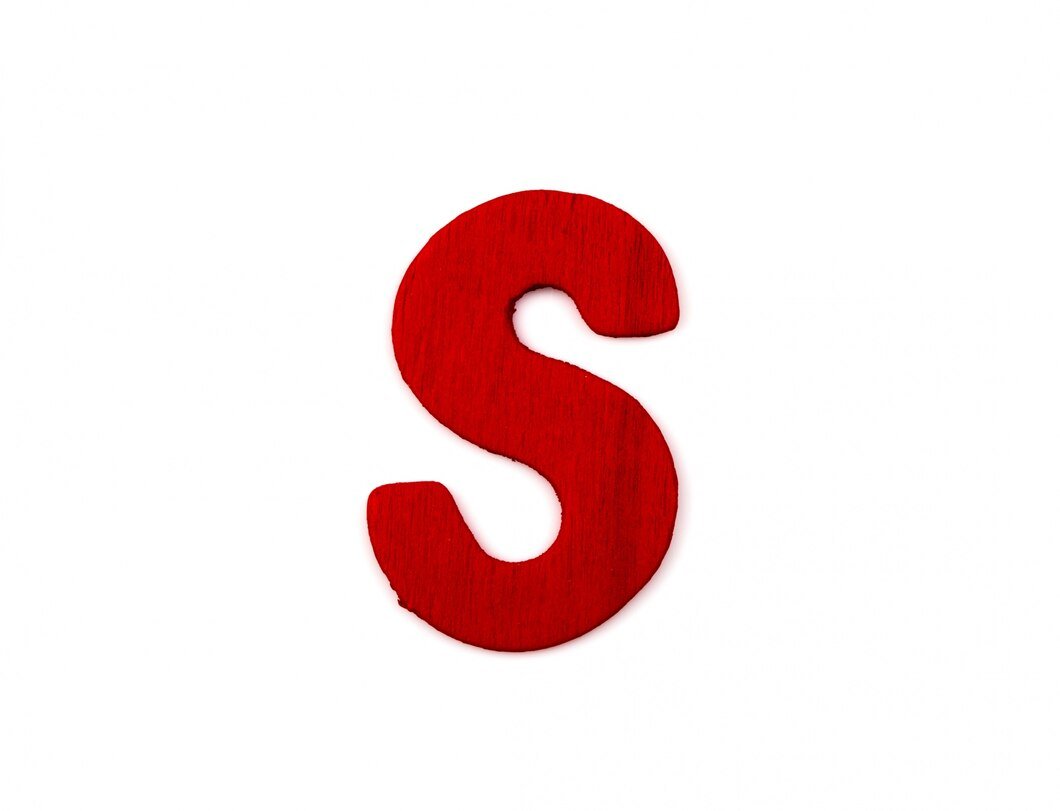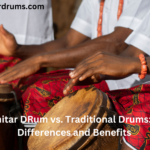Trending
The SEO Powerhouse: How Garage2Global Experts Are Boldly Redefining Unstoppable Digital Success
SEO experts at garage2global: In the unforgiving arena of digital marketing, where algorithms shift like desert sands and businesses fight…
The Scimitar Drum: Where Ancient Mystique Meets Modern Rhythm
Introduction
In the shadowed corners of percussion history lies an instrument that defies conventional drumming wisdom. It gets its name from the scimitar, a curved, single-edged sword traditionally used in Middle Eastern regions, yet this drum transcends mere nomenclature to embody a fusion of form, function, and mystique that has captivated musicians across continents and centuries.
The scimitar drum represents more than just another addition to the percussionist’s arsenal. It stands as a testament to humanity’s endless quest to transform the ordinary into the extraordinary, to take the fundamental act of striking a surface and elevate it into something approaching the divine. This isn’t merely about making noise—it’s about channeling the very essence of ancient warfare and spiritual practice into modern musical expression.
The Genesis of an Enigma
Understanding the scimitar drum requires stepping back into the mists of Middle Eastern history, where the line between weapon and instrument, between sacred and secular, often blurred into something altogether more profound. Originating in the Middle East, the scimitar drum has been an integral part of cultural and spiritual practices that predate our modern understanding of percussion instruments.
The instrument’s origins are as curved and complex as its physical form. Unlike the straightforward genealogy of conventional drums, the scimitar drum emerged from a confluence of practical necessity, artistic expression, and spiritual requirement. The scimitar drum is thought to have been used in various cultural and religious ceremonies. Its curved shape and resonant sound would have made it an ideal instrument for creating the rhythms needed to accompany dances, rituals, and storytelling.
Consider the environment in which this instrument was born: desert landscapes where sound carried differently, where the relationship between performer and audience was intimate and immediate. The curved shape wasn’t merely aesthetic—it was acoustic engineering born from centuries of trial and refinement. The ancient craftsmen who first conceived of bending wood and stretching skin across such an unconventional frame were solving problems we’re only beginning to understand today.
The spiritual dimensions of the scimitar drum cannot be understated. The Scimitar Drum is more than just a musical instrument; it holds deep spiritual and cultural meaning in many ancient societies. It was often considered a sacred tool, used to communicate with the divine during religious ceremonies and festivals. This wasn’t background music—this was communication with the cosmos, rhythm as prayer, percussion as pathway to transcendence.
But there’s another layer to its genesis that speaks to the warrior culture from which it emerged. The drum may have also been used by soldiers, suggesting a dual purpose that married the martial with the musical. Imagine the psychological impact of hearing these drums echoing across a battlefield, their curved forms catching moonlight while producing sounds that seemed to emerge from another realm entirely.

Anatomy of Innovation: Decoding the Design
The scimitar drum’s most immediately striking feature is its departure from percussion orthodoxy. Unlike traditional cylindrical drums, the scimitar drum has a distinctive curved design that not only affects its appearance but also its sound. This isn’t design for design’s sake—every curve, every angle serves both aesthetic and acoustic purposes.
The construction process itself is an art form that bridges traditional craftsmanship with acoustic science. The body of the drum is typically crafted from wood, which is carefully carved to create a curved, flowing shape that resembles the blade of a scimitar. This process requires not just technical skill but an intuitive understanding of how wood grain, moisture content, and carving techniques affect the final sonic outcome.
Modern iterations of the instrument showcase the evolution of materials science applied to ancient design principles. Crafted from materials like wood, metal, and synthetic components… Various materials are used to build modern scimitar drums, including wood, metal, and synthetic materials. Each material choice creates a different sonic palette, from the warm resonance of traditional woods to the bright, cutting tones of metal constructions.
The drumhead selection represents another layer of complexity in the instrument’s design philosophy. The drumheads are often made of animal skin, such as goat and sheepskin, or synthetic materials, such as Mylar. Traditional animal skins provide warmth and character that synthetic materials struggle to replicate, yet modern alternatives offer consistency and durability that touring musicians demand.
The aesthetic elements go far beyond mere decoration. Its appearance is often enhanced with artistic decorations and carvings, making it a visual and auditory delight. These embellishments serve multiple purposes: they reflect cultural heritage, provide tactile reference points for players, and create visual interest that enhances the instrument’s stage presence.
The frame construction deserves particular attention, as it represents the engineering heart of the instrument. Wood or metal frames are typically used, and the curved shape resembles the weapon from which it takes its name. The frame must be simultaneously rigid enough to withstand the tension of the drumhead and flexible enough to allow the wood to resonate freely. This balance requires masterful understanding of structural engineering applied to musical instrument construction.
Material science considerations extend beyond the obvious components. The adhesives used to bond elements, the hardware that holds everything together, even the finish applied to protect the wood—each choice ripples through the instrument’s final voice. Wood offers warmth and depth in sound, while synthetic options provide durability and weather resistance, creating a decision matrix that reflects the player’s priorities and playing environment.
The Sound Signature: Acoustic Architecture in Motion
The scimitar drum’s sonic personality defies easy categorization. A crescent-shaped percussion instrument with Middle Eastern origins, the scimitar drum produces an extremely rich, complex sound that is both powerful and subtle at the same time. This paradox—power married to subtlety—represents the instrument’s unique position in the percussion hierarchy.
The acoustic properties emerge from the complex interaction between the curved shell and the tensioned drumhead. The unique construction allows for a deep, resonant sound that is both powerful and melodic. Unlike conventional drums where the sound radiates primarily from the drumhead, the scimitar drum’s curved body creates additional resonance chambers and reflection points that contribute to its distinctive voice.
The tonal range available from a single instrument is remarkably broad. From crashing crashes to delicate shimmering effects, cymbals offer a wide range of sonic possibilities. This versatility stems from the instrument’s construction, which allows different striking techniques to access different aspects of its acoustic personality.
The fundamental physics involved are fascinating. The curved shell doesn’t just look different—it behaves acoustically different from traditional cylindrical drums. Sound waves interact with the curved surfaces in complex ways, creating interference patterns, standing waves, and harmonic relationships that would be impossible with conventional drum geometry. The result is a sound that seems to shift and evolve even during sustained notes.
Frequency response characteristics set the scimitar drum apart from its conventional cousins. The curved shell emphasizes certain harmonic frequencies while suppressing others, creating a tonal signature that’s immediately recognizable. The low-end response tends to be warm and rounded rather than punchy, while the high-frequency content sparkles with an almost metallic quality that hints at the instrument’s blade-inspired heritage.
The dynamic range represents another crucial aspect of the instrument’s voice. The scimitar drum excels at both thunderous proclamations and whispered confidences. This range isn’t just about volume—it’s about tonal character at different dynamic levels. Soft playing reveals subtle nuances and harmonic complexities that disappear at higher volumes, while aggressive playing unleashes entirely different sonic characteristics.
Technique and Tradition: The Art of Playing
Mastering the scimitar drum requires abandoning many assumptions about percussion technique. It is usually played with the hands and fingers, but this simple description barely scratches the surface of the complex interaction between player and instrument required for true mastery.
The fundamental approach differs significantly from conventional drumming. Playing a scimitar drum involves various hand and finger techniques, such as palm strikes, finger taps, and slaps. Each technique accesses different aspects of the instrument’s sonic personality, and mastery requires developing independence and coordination that goes well beyond basic hand drumming skills.
The curved surface presents unique challenges and opportunities for the developing player. One fundamental method is the traditional hand strike. This technique must be adapted to work with the instrument’s non-uniform surface. The curve means that hand positioning, striking angle, and follow-through all require careful consideration and adjustment compared to flat-surface drumming.
Advanced techniques push the boundaries of what’s possible with hand percussion. Advanced techniques include rolls, muting, and syncopation. These aren’t just fancy embellishments—they’re essential vocabulary for expressing the full range of musical ideas that the scimitar drum makes possible. The curved surface allows for muting techniques that create entirely unique timbral effects, while the shell’s resonant properties make rolls particularly effective and dramatic.
The relationship with traditional Middle Eastern rhythmic patterns adds another layer of complexity to technique development. Beginners can start with common Middle Eastern patterns like the Maqsum or Baladi, gradually advancing to complex arrangements. These patterns weren’t designed for the scimitar drum, but they reveal aspects of the instrument’s voice that might otherwise remain hidden.
Tonal variation represents one of the most sophisticated aspects of scimitar drum technique. Key techniques include achieving varied tones by striking different parts of the drumhead and learning precise hand movements for intricate rhythms. The curved surface offers more striking zones than conventional drums, each with its own tonal characteristics. Mapping these zones and developing the precision to access them consistently represents a major milestone in technical development.
The physical demands of playing the scimitar drum extend beyond mere hand technique. The instrument’s shape requires specific posture and positioning that can take time to develop. The curve that makes the drum visually striking also creates ergonomic challenges that players must address through careful attention to body mechanics and instrument positioning.
Cultural Resonance: Beyond the Beat
The cultural significance of the scimitar drum extends far beyond its role as a musical instrument. It serves as a bridge between ancient traditions and contemporary artistic expression, carrying within its curved form centuries of cultural memory and spiritual practice.
In traditional contexts, the instrument functioned as more than entertainment. Its curved shape and resonant sound would have made it an ideal instrument for creating the rhythms needed to accompany dances, rituals, and storytelling. These weren’t casual performances—they were community events that reinforced social bonds, preserved cultural knowledge, and provided spiritual connection.
The storytelling tradition associated with the scimitar drum deserves particular attention. In pre-literate societies, rhythm served as a mnemonic device that helped preserve and transmit cultural knowledge. The unique voice of the scimitar drum would have made certain stories and their associated rhythms immediately recognizable, creating an oral tradition that could survive across generations.
Religious and ceremonial uses highlight the instrument’s sacred dimensions. The curved form itself held symbolic significance in many cultures, representing the crescent moon, the cycle of life, or the blade that cuts through illusion to reveal truth. When used in ceremonial contexts, the scimitar drum wasn’t just providing rhythm—it was invoking these deeper symbolic meanings.
The gender dynamics associated with traditional scimitar drum use vary significantly across cultures and time periods. In some contexts, the instrument was primarily associated with male warriors and religious leaders. In others, it formed part of women’s ceremonial and social practices. Understanding these cultural contexts is crucial for contemporary players who wish to approach the instrument with appropriate respect and understanding.
The evolution from traditional to contemporary contexts reveals both the instrument’s adaptability and the challenges of cultural preservation. Modern players must navigate the tension between honoring traditional uses and finding new forms of expression that speak to contemporary audiences. This isn’t just about technique—it’s about cultural responsibility and artistic integrity.
Regional variations in construction, playing technique, and cultural significance add another layer of complexity to the instrument’s cultural footprint. What we call the “scimitar drum” today actually represents a family of related instruments, each with its own specific cultural context and artistic tradition. Recognizing these distinctions is crucial for understanding the instrument’s full cultural impact.

Modern Renaissance: Contemporary Applications
The scimitar drum’s journey from ancient ceremonial instrument to contemporary musical tool represents one of percussion’s most fascinating evolutionary stories. Modern applications span genres and contexts that the instrument’s original creators could never have imagined, yet somehow the essential character that made it compelling centuries ago continues to resonate with today’s audiences.
World music ensembles have embraced the scimitar drum as a bridge between traditional and contemporary sounds. Its unique voice allows it to complement Western percussion while maintaining its distinct cultural identity. This isn’t about musical fusion for its own sake—it’s about finding common ground between musical traditions that might otherwise remain isolated from each other.
Contemporary composers have discovered the instrument’s potential for creating atmospheric and textural effects that conventional percussion can’t match. The curved shell’s acoustic properties make it particularly effective in creating ambient soundscapes, while its dynamic range allows it to function equally well in intimate chamber settings and full orchestral contexts.
The instrument’s visual appeal has made it increasingly popular in performance contexts where aesthetics matter as much as acoustics. This fusion of form and function makes the scimitar drum unique in the world of percussion instruments. Theater productions, dance performances, and multimedia presentations have all found ways to incorporate the instrument’s striking appearance into their artistic vision.
Recording and production applications reveal another dimension of the instrument’s contemporary relevance. The scimitar drum’s complex harmonic content and unique attack characteristics make it particularly suitable for certain types of recorded music. Its ability to cut through dense mixes while maintaining its tonal character has made it a favorite among producers working in world music, ambient, and experimental genres.
Educational contexts have embraced the scimitar drum as a tool for teaching both percussion technique and cultural awareness. Its accessible playing style makes it suitable for beginners, while its complex possibilities provide challenges for advanced students. The cultural history associated with the instrument creates opportunities for interdisciplinary learning that connects music education with history, anthropology, and cultural studies.
The therapeutic applications of the scimitar drum represent an emerging area of contemporary use. Its warm, resonant tones and accessible playing style make it suitable for music therapy contexts, while its cultural associations with healing and spiritual practice add depth to its therapeutic potential. This isn’t just about making music—it’s about using music as a tool for healing and personal growth.
Construction Mastery: The Art and Science of Building
Creating a scimitar drum requires a unique combination of traditional craftsmanship and modern understanding of acoustic principles. The construction process itself is an art form that demands respect for both historical techniques and contemporary innovations in materials and methods.
The wood selection process represents the first crucial decision in construction. The scimitar drum has ancient roots, with early versions made from natural materials like animal skins and wood. Different wood species offer different tonal characteristics, working properties, and aesthetic qualities. The choice of wood doesn’t just affect the final sound—it influences every aspect of the construction process, from carving techniques to finishing options.
The carving process itself requires specialized skills that bridge woodworking and instrument making. Creating the curved shell isn’t simply a matter of bending wood—it requires understanding how grain direction, moisture content, and carving techniques all interact to create both structural integrity and acoustic performance. The curves must be mathematically precise to ensure proper drumhead tension, yet organic enough to maintain the instrument’s aesthetic appeal.
Modern construction techniques have introduced new possibilities while respecting traditional methods. CNC machining allows for precision that would be impossible with hand tools alone, yet the final shaping and finishing still require human touch and judgment. This blend of technology and tradition reflects the instrument’s own evolution from ancient to contemporary contexts.
The hardware selection process involves considerations that extend far beyond simple functionality. Tensioning systems must accommodate the unique stresses created by the curved shell, while mounting hardware must be both secure and aesthetically appropriate. Each hardware choice affects both the instrument’s performance characteristics and its visual appeal.
Quality control in scimitar drum construction involves testing and adjustment procedures that don’t apply to conventional drums. The curved shell creates non-uniform stress patterns that require careful monitoring and adjustment throughout the construction process. The final tuning and setup process requires understanding how the curved geometry affects drumhead behavior and overall acoustic performance.
The finishing process represents the final opportunity to affect both the instrument’s appearance and its acoustic characteristics. Traditional finishes offer authentic appearance and allow the wood to breathe naturally, while modern alternatives provide durability and consistency. The choice involves balancing historical authenticity with practical performance requirements.
The Player’s Journey: From Novice to Master
Developing proficiency on the scimitar drum represents a unique challenge in the percussion world. The instrument’s distinctive characteristics require players to develop skills and sensitivities that don’t directly transfer from other percussion instruments, creating a learning curve that’s both challenging and rewarding.
The initial approach to the instrument often involves unlearning habits developed on conventional drums. The curved playing surface requires different hand positioning, different striking techniques, and different approaches to muting and tonal control. What works on a flat drumhead may not work on the scimitar drum’s curved surface, requiring players to develop new muscle memory and technique patterns.
Ear training takes on special importance with the scimitar drum because of its complex harmonic content and unique tonal characteristics. The Scimitar Drum offers a rich palette of sounds, allowing players to explore various techniques. Developing the ability to hear and control these subtle tonal variations requires focused listening skills and careful attention to technique refinement.
The physical conditioning required for scimitar drum playing involves developing strength and endurance in muscle groups that might not be heavily used in other percussion contexts. The curved playing surface requires different hand and wrist positions, while the instrument’s resonant properties make it responsive to subtle changes in technique that might not matter on less sensitive instruments.
Cultural education forms an essential component of serious scimitar drum study. Understanding the instrument’s traditional contexts, playing styles, and cultural significance enriches the player’s artistic development and ensures respectful approach to the instrument’s heritage. This isn’t just academic knowledge—it’s practical information that informs everything from repertoire selection to performance practice.
The development of personal style on the scimitar drum involves finding the balance between respecting traditional approaches and exploring contemporary possibilities. Scimitar drums are played using a variety of techniques, including hand drumming, stick drumming, and frame drumming. Each approach offers different expressive possibilities, and mastery involves understanding when and how to employ each technique effectively.
Advanced study involves exploring the instrument’s potential for extended techniques and contemporary applications. This might include preparation techniques that alter the instrument’s sound, electronic processing that extends its sonic palette, or integration with other instruments and musical technologies. The goal isn’t to abandon the instrument’s traditional character but to expand its expressive possibilities.
Sonic Exploration: The Science of Sound
The acoustic behavior of the scimitar drum represents a fascinating case study in how form influences function in musical instrument design. The curved shell creates acoustic phenomena that don’t occur in conventional drums, resulting in a sound that’s both familiar and utterly unique in the percussion world.
The fundamental resonance characteristics differ significantly from cylindrical drums. The curved shell creates multiple resonance chambers and reflection points that interact in complex ways. Understanding these interactions helps explain why the scimitar drum’s sound seems to have more depth and complexity than its size would suggest. The curve isn’t just aesthetic—it’s acoustic engineering.
Harmonic content analysis reveals the sophisticated tonal characteristics that make the scimitar drum so compelling. The instrument emphasizes certain frequency ranges while suppressing others, creating a tonal signature that’s immediately recognizable yet difficult to replicate with conventional drums. This harmonic signature is what allows the instrument to cut through complex musical arrangements while maintaining its essential character.
The attack and decay characteristics represent another crucial aspect of the instrument’s acoustic personality. The curved shell affects how sound energy is released and sustained, creating attack transients that are sharper than conventional drums while maintaining longer, more complex decay patterns. This combination provides both rhythmic clarity and sustained interest that keeps listeners engaged.
Room acoustics interact with the scimitar drum in ways that differ from conventional percussion. The curved shell radiates sound in patterns that don’t match typical drum projection characteristics. Understanding these radiation patterns helps players position themselves and their instruments for optimal acoustic results in different performance spaces.
The interaction between drumhead tension and shell curvature creates tuning possibilities that don’t exist with conventional drums. The non-uniform tension distribution across the drumhead allows for more complex tuning relationships and greater tonal variety from a single instrument. Mastering these tuning possibilities represents an advanced aspect of scimitar drum technique.
Electronic processing and amplification present both opportunities and challenges with the scimitar drum. The instrument’s complex harmonic content responds well to certain types of processing while being damaged by others. Understanding these characteristics is crucial for players who want to integrate the instrument into contemporary musical contexts without losing its essential character.
Cultural Bridge: East Meets West
The scimitar drum’s journey from Middle Eastern ceremonial instrument to global musical tool represents more than just cultural exchange—it embodies the universal language of rhythm that transcends geographical and cultural boundaries. This transformation offers insights into how musical instruments adapt to new contexts while maintaining their essential character.
The process of cultural adaptation involves both preservation and innovation. Contemporary players must understand traditional contexts and techniques while finding ways to make the instrument relevant to modern audiences. This isn’t about cultural appropriation—it’s about respectful cultural exchange that honors the instrument’s heritage while allowing for creative growth.
Cross-cultural collaborations have revealed new possibilities for the scimitar drum that might not have emerged within traditional contexts alone. When Middle Eastern musicians collaborate with Western composers, African percussionists, or Asian instrumentalists, the resulting music often reveals aspects of the scimitar drum that remain hidden within any single cultural context.
The educational implications of this cultural bridge are significant. Learning to play the scimitar drum provides opportunities for students to engage with Middle Eastern culture, history, and musical traditions in ways that purely academic study cannot match. The physical act of playing the instrument creates embodied knowledge that complements intellectual understanding.
Language and terminology present interesting challenges in cross-cultural contexts. Different cultures have different names for similar instruments, different techniques for similar sounds, and different cultural associations with similar musical practices. Navigating these differences requires sensitivity and willingness to learn from multiple cultural perspectives.
The role of authenticity in cross-cultural musical practice raises complex questions that don’t have simple answers. How authentic must a performance be to honor the instrument’s cultural heritage? How much innovation is acceptable before the cultural connection is lost? These questions don’t have universal answers, but they’re worth considering for anyone serious about cross-cultural musical practice.
The Future Sound: Innovation and Evolution
The scimitar drum’s future lies not in abandoning its past but in finding new ways to express its essential character within contemporary musical contexts. Innovation in construction, technique, and application promises to expand the instrument’s possibilities while maintaining the qualities that make it unique.
Materials science continues to offer new possibilities for scimitar drum construction. Carbon fiber, advanced composites, and hybrid materials provide options that weren’t available to traditional makers. These materials offer advantages in terms of consistency, durability, and weight, while creating new tonal possibilities that complement rather than replace traditional sounds.
Electronic integration represents an area of significant potential development. Sensors embedded in the drum shell or drumhead can provide detailed information about playing technique, allowing for sophisticated electronic processing that responds to subtle performance nuances. This technology could expand the instrument’s expressive range while maintaining its essential acoustic character.
The role of artificial intelligence in both composition and performance opens new possibilities for scimitar drum applications. AI systems could analyze traditional playing patterns to generate new rhythmic possibilities, or provide real-time accompaniment that responds to live performance. These applications represent tools for creativity rather than replacements for human musicianship.
Educational technology offers new ways to teach and learn scimitar drum technique. Virtual reality systems could allow students to learn from master players regardless of geographical location, while motion capture technology could provide detailed feedback on technique development. These tools could democratize access to high-quality instruction while preserving traditional teaching methods.
The instrument’s visual appeal suggests possibilities for integration with other art forms that go beyond traditional musical performance. Dance, theater, visual arts, and multimedia presentations all offer contexts where the scimitar drum’s unique combination of acoustic and visual properties could create new forms of artistic expression.
Research into the instrument’s acoustic properties continues to reveal new understanding of how curved shells affect drum sound. This research could lead to new construction techniques that optimize specific acoustic characteristics or create entirely new variations on the basic scimitar drum concept.
Conclusion: The Eternal Rhythm
The scimitar drum stands as more than just another percussion instrument—it represents the endless human drive to transform the mundane into the magical, to take basic materials and simple concepts and craft something that speaks to both body and soul. Its curved form embodies the convergence of practical acoustics and profound aesthetics, creating an instrument that rewards both casual exploration and lifelong study.
From its ancient origins in Middle Eastern ceremonial contexts to its contemporary applications in world music, recording studios, and concert halls, the scimitar drum has proven its ability to adapt and evolve while maintaining its essential character. This adaptability suggests a future filled with possibilities yet to be explored, innovations yet to be developed, and musical territories yet to be mapped.
The instrument’s cultural significance extends beyond its musical applications. It serves as a bridge between traditions, a conversation starter between cultures, and a reminder that some forms of human expression transcend the boundaries we often imagine separate us. In an increasingly connected yet fragmented world, instruments like the scimitar drum offer opportunities for genuine cultural exchange and mutual understanding.
For players, the scimitar drum offers a journey of discovery that never truly ends. Its complex acoustic properties, diverse technique requirements, and rich cultural heritage create layers of meaning and possibility that can sustain a lifetime of exploration. Whether approached as a window into Middle Eastern culture, a tool for contemporary musical expression, or simply a beautiful object that makes compelling sounds, the scimitar drum rewards investment with discovery.
The future of the scimitar drum lies not in museums or academic study alone, but in the hands of players who understand both its heritage and its potential. Each new player who picks up the instrument contributes to its ongoing evolution, adding their own voice to a conversation that spans centuries and cultures. In this way, the scimitar drum remains not just a relic of the past but a living tradition that continues to grow and evolve.
In the end, the scimitar drum embodies something essential about human creativity and cultural expression. It reminds us that innovation often comes not from abandoning tradition but from understanding it deeply enough to see new possibilities within familiar forms. As we move forward into an uncertain future, instruments like the scimitar drum offer anchors to our past and inspirations for our future, proving that some things—rhythm, beauty, the human need for expression—remain constant even as everything else changes.
The curved blade that inspired its name was designed to cut through armor and flesh, but the scimitar drum cuts through something far more significant: the barriers between cultures, the boundaries between past and future, the walls between performer and audience. In doing so, it reveals the truth that lies at the heart of all great musical instruments—that in the right hands, with the right intention, even the simplest tools can become conduits for transcendence, connection, and joy.
The rhythm continues. The conversation evolves. The scimitar drum endures, carrying within its curved form all the possibilities that patient hands and open hearts can discover. This is its power, its promise, and its gift to the world.











